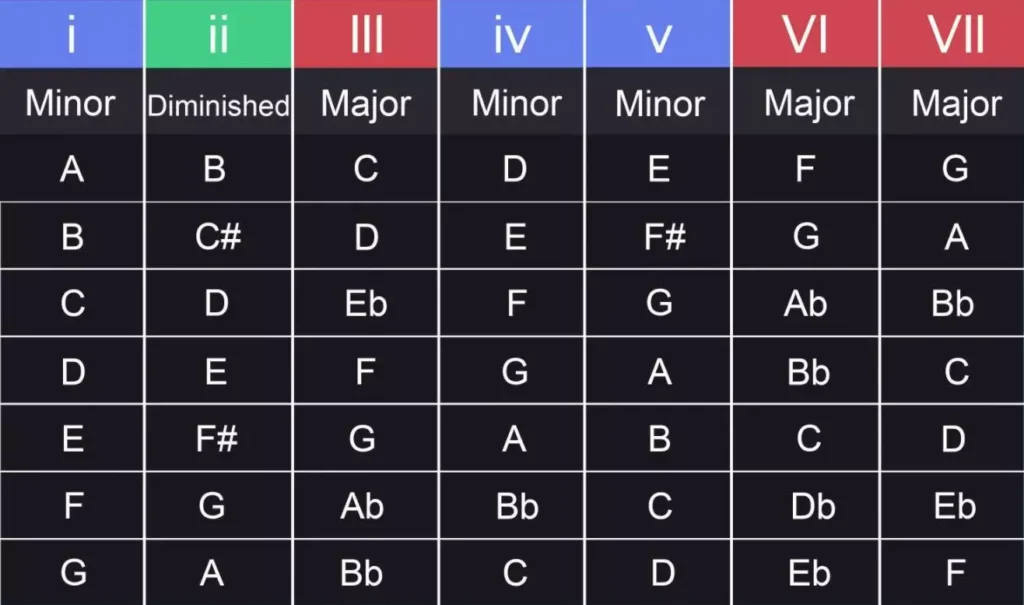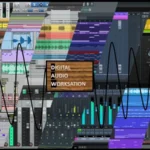Hey there, fellow music lovers! Have you ever wondered what makes your favorite songs so catchy and memorable? Well, my friend, let me introduce you to the magical world of chord progressions. Now, don’t be intimidated by the fancy terminology. Chord progressions are simply a series of chords played in a specific order to create harmony and give a song its unique flavor.
Understanding Chord Progressions

Before we dive into the hilarious journey of exploring different genres, let’s take a moment to understand the basics of chord progressions. Picture this: you’re playing your guitar or sitting at the piano, and you strum a few chords. Each chord has a distinct sound and evokes a certain emotion. When you combine multiple chords in a specific sequence, you create a chord progression that sets the mood and structure of a song.
Importance of Chord Progressions in Music
Now that we have a grasp on what chord progressions are, let’s talk about why they are so important in music. Chord progressions provide the foundation for melodies, harmonies, and song structures. They help establish the tonality, mood, and overall feel of a piece of music. Whether it’s a heart-wrenching ballad or an upbeat dance track, chord progressions play a crucial role in shaping the emotional impact of a song.
Common Progressions in Different Genres
Alright, buckle up and get ready for a hilarious and enlightening journey through various genres as we explore some common chord progressions. Each genre has its own unique set of chord progressions that define its sound and style. So, let’s put on our musical detective hats and uncover the secrets behind these popular progressions.
Exploring Hip Hop Chord Progressions

Yo, my fellow hip hop enthusiasts! Hip hop wouldn’t be the same without its iconic chord progressions. One of the most popular progressions in hip hop is the classic “vi-IV-I-V” progression. This progression, often used in the chorus of many rap songs, creates a catchy and anthemic vibe. Just imagine yourself bobbing your head to the rhythm while spitting out some slick rhymes. It’s pure magic! Other pretty cool chord progressions for you:
- “i-V-iv-iv” Progression: This progression, with its moody and introspective feel, has been used in numerous hip hop tracks to convey emotion and depth in the lyrics.
- “ii-V-I” Jazz Progression: Derived from jazz music, this progression has been seamlessly incorporated into hip hop, adding a sophisticated and mellow touch to the genre.
- “vi-iii-IV-V” Progression: With its uplifting and energetic feel, this progression has been a go-to choice for many hip hop artists looking to create upbeat and positive tracks.
- “i-VII-VI-V” Progression: This dark and suspenseful progression has been utilized in hip hop to add tension and drama, often complementing intense lyrical content.
Unleashing the Power of Trap Chord Progressions

Trap music, with its infectious beats and heavy bass, has taken the music world by storm. And guess what? Chord progressions play a pivotal role in creating that trap magic. One popular progression in trap is the “i-VII-VI-V” progression. It’s dark, moody, and guaranteed to make you want to move your body in ways you never thought possible. So, grab your trap beats and let’s get wild!
- VI-IV-I-V: This progression adds a sense of tension and release, commonly found in many trap tracks.
- i-VI-III-VII: This progression adds an interesting twist with a descending bass line, contributing to the hypnotic feel of trap music.
- i-III-VII-VI: This progression offers a slightly different feel by starting with the minor tonic and moving to major chords, creating a captivating contrast.
- i-VI-VII-VI: This progression introduces a unique flair by incorporating a repeated VI-VII-VI sequence, adding an intriguing rhythmic pattern to the music.
Soulful and Smooth: R&B Chord Progressions

Ah, R&B, the genre that’s all about soul, love, and silky smooth vibes. R&B chord progressions are like a warm embrace, enveloping you in a sea of emotions. One of the most beloved progressions in R&B is the “ii-V-I” progression. It’s jazzy, sophisticated, and has the power to make hearts flutter.
Here are 4 more amazing chord progressions that are perfect for capturing those soulful and silky smooth vibes:
- vi-IV-I-V Progression: This progression offers a smooth and soulful feel, commonly found in many R&B ballads.
- I-vi-IV-V Progression: This progression provides a classic and timeless feel, often used in soulful R&B songs.
- iii-vi-ii-V Progression: This progression adds a touch of sophistication and emotion to R&B compositions.
- I-IV-ii-V Progression: This progression offers a blend of familiarity and emotional depth, ideal for soulful R&B tracks.
Infusing Rhythm and Groove: Afrobeat Chord Progressions

If you’re a fan of infectious rhythms and irresistible grooves, then Afrobeat is the genre for you. Afrobeat chord progressions are like a musical journey through the heart of Africa. One popular progression in Afrobeat is the “I-IV-I-V” progression. It’s vibrant, energetic, and will transport you straight to the dance floor. So, put on your dancing shoes and get ready to shake your hips to the irresistible sounds of Afrobeat.
- VI-IV-I-V Progression: The VI-IV-I-V progression adds a touch of variation to the traditional I-IV-I-V, delivering a fresh and intriguing sound for Afrobeat compositions.
- II-V-I Progression: This jazz-inspired progression can bring a sophisticated and jazzy flavor to Afrobeat tracks, adding depth and complexity to the music.
- III-VI-II-V Progression: The III-VI-II-V progression introduces a slightly more complex and melodically rich structure, perfect for creating an engaging and dynamic Afrobeat composition.
- I-III-IV-I Progression: This progression infuses a sense of anticipation and drive, making it a great choice for building tension and excitement in Afrobeat music.
Best Progressions for Each Genre
Now that we’ve explored some common chord progressions in different genres, it’s time to dive into the best chord progressions for each genre. These progressions have stood the test of time and are guaranteed to make your music shine. So, grab your instrument of choice and let’s create some musical magic!
Hip Hop: “vi-IV-I-V”
The “vi-IV-I-V” progression is a hip hop staple. Whether you’re a rapper or a producer, this progression will give your tracks that instantly recognizable hip hop flavor. So, grab your microphone or your MPC and let the magic begin!
Trap: “i-VII-VI-V”
When it comes to trap music, the “i-VII-VI-V” progression reigns supreme. It’s dark, mysterious, and will make your beats hit harder than ever. So, fire up your DAW and let’s get trapped in the music!
R&B: “ii-V-I”
For all you smooth operators out there, the “ii-V-I” progression is your secret weapon. It’s sensual, romantic, and will make hearts melt with every note. So, grab your guitar or sit at the piano and let the soulful melodies flow.
Afrobeat: “I-IV-I-V”
If you’re ready to bring the party to life, the “I-IV-I-V” progression is your go-to. It’s infectious, energetic, and will have everyone on their feet in no time. So, grab your drums or your keyboard and let’s get the Afrobeat party started!
Tips for Creating Your Own Chord Progressions
Now that you’ve explored different genres and their chord progressions, it’s time to unleash your creativity and create your own magic. Here are some tips to get you started on your journey of crafting unique and memorable chord progressions:
- Experiment with different chord voicings and inversions to add variety and color to your progressions.
- Don’t be afraid to break the rules and try unconventional progressions. Sometimes, the most interesting and innovative ideas come from thinking outside the box.
- Take inspiration from your favorite songs and analyze the chord progressions they use. This can help you understand the patterns and formulas that work well in different genres.
- Trust your ears and follow your intuition. Music is a personal expression, so don’t be afraid to trust your instincts and create something that resonates with you.
Resources for Learning and Practicing
If you’re hungry for more knowledge and want to dive deeper into the world of chord progressions, here are some resources to quench your thirst:
- Online tutorials and courses: Websites like Udemy and Coursera offer a wide range of courses on music theory and chord progressions.
- Books: Check out “The Chord Progression Handbook” by Tom Kolb or “How to Write Songs on Guitar” by Rikky Rooksby for in-depth guides on chord progressions.
- Music theory apps: Apps like “Music Theory Helper” and “Complete Music Reading Trainer” can help you practice and reinforce your knowledge of chord progressions.
Conclusion
Congratulations, my friend! You’ve embarked on a hilarious journey through different genres and discovered the power of chord progressions. From hip hop to trap, R&B to Afrobeat, each genre has its own unique set of chord progressions that define its sound and style. So, keep exploring, keep experimenting, and most importantly, keep having fun with your music. Now go out there and create some memorable chord progressions that will make the world dance to your beat!
This post may contain affiliate links. If you make a purchase through these links, we may earn a small commission at no additional cost to you.








